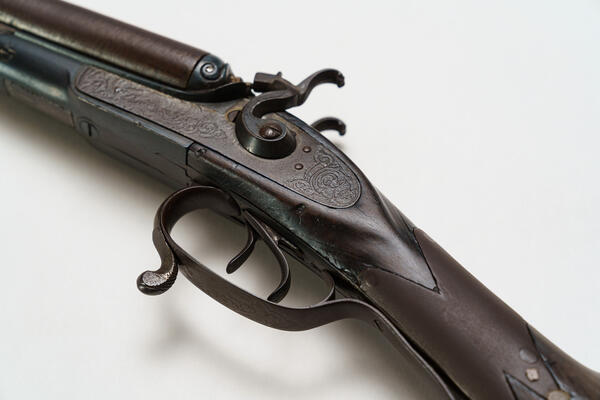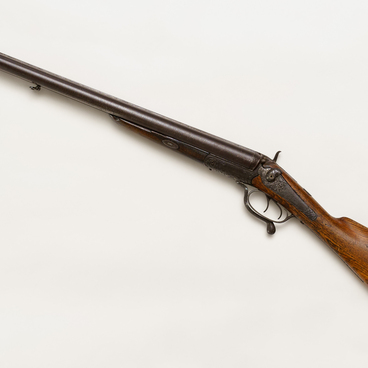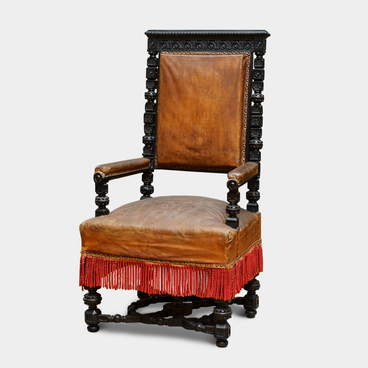The shotgun from the museum collection was a present from Nikolay Alexeyevich Nekrasov to Nikolay Andreyevich Osorin, a peasant from the village of Makarovo, Rostov uyezd, Yaroslavl governorate. Nikolay Andreyevich was a friend of the poet, as well as a huntsman who often accompanied Nikolay Alexeyevich on hunting trips.
Osorin kept the gun and passed it on to his grandson, who later exchanged it for a hunting dog. This exhibit was purchased by the museum in 1952 from one of the peasants in the village of Osinovets, Rostov district, for 350 rubles.
The lightweight barrels of the shotgun are made of blackened steel and arranged horizontally. The caliber of the barrels is 17 millimeters. The barrels are bored smooth, without rifling. The cartridge chambers have a diameter of 70 millimeters. The sighting bar is low, smooth, and protrudes 1.5 millimeters at the breech. The mushroom cap-shaped front sight is 2 millimeters in diameter.
The barrels are soldered all the way along the upper sighting bar and lower connecting bar. The lower bar has a soldered belt attachment bracket. The barrels are made of twisted damascus steel. The small fore-end, or front part of the rifle stock, is made of walnut and has a button on the end, without notches.
Both barrels are equipped with extractors, or “ejectors”. The bolt carrier is made of blued steel. It is reinforced with side strips and forearm adjustment bases. The barrels are hinged, and have a Daw lever lock system of 1861. The lever is shortened and located below the bracket, which protects the triggers. When unlocking the barrels, the lever is pulled forward. When the barrels are locked, the lever is spring-loaded to the locked position.
The trigger mechanism of the shotgun is in good working condition and has soft triggers. The mechanism is triggered by pulling the trigger, the right barrel requires 3 kilograms of force, the left barrel 1-1.5 kilograms.
The shotgun has two triggers. The front one is for the right trigger and the rear one for the left trigger. When the trigger is cocked, the striker strips, the striking elements, move under the breech block from the breech face or the rear end of the barrel.
The small of the butt has a rhombic notch that was made during manufacture.
The stock, or wooden part of the shotgun, is made
of high-quality root walnut. It is straight, with a cheek protrusion. The stock
has a metal rear part, called the “butt plate”. It goes over the upper ridge of
the stock by 2.5 centimeters. The butt plate is screwed to the wood from the
end, top and middle. The lower ridge of the stock is fitted with a stock swivel
for the belt.






